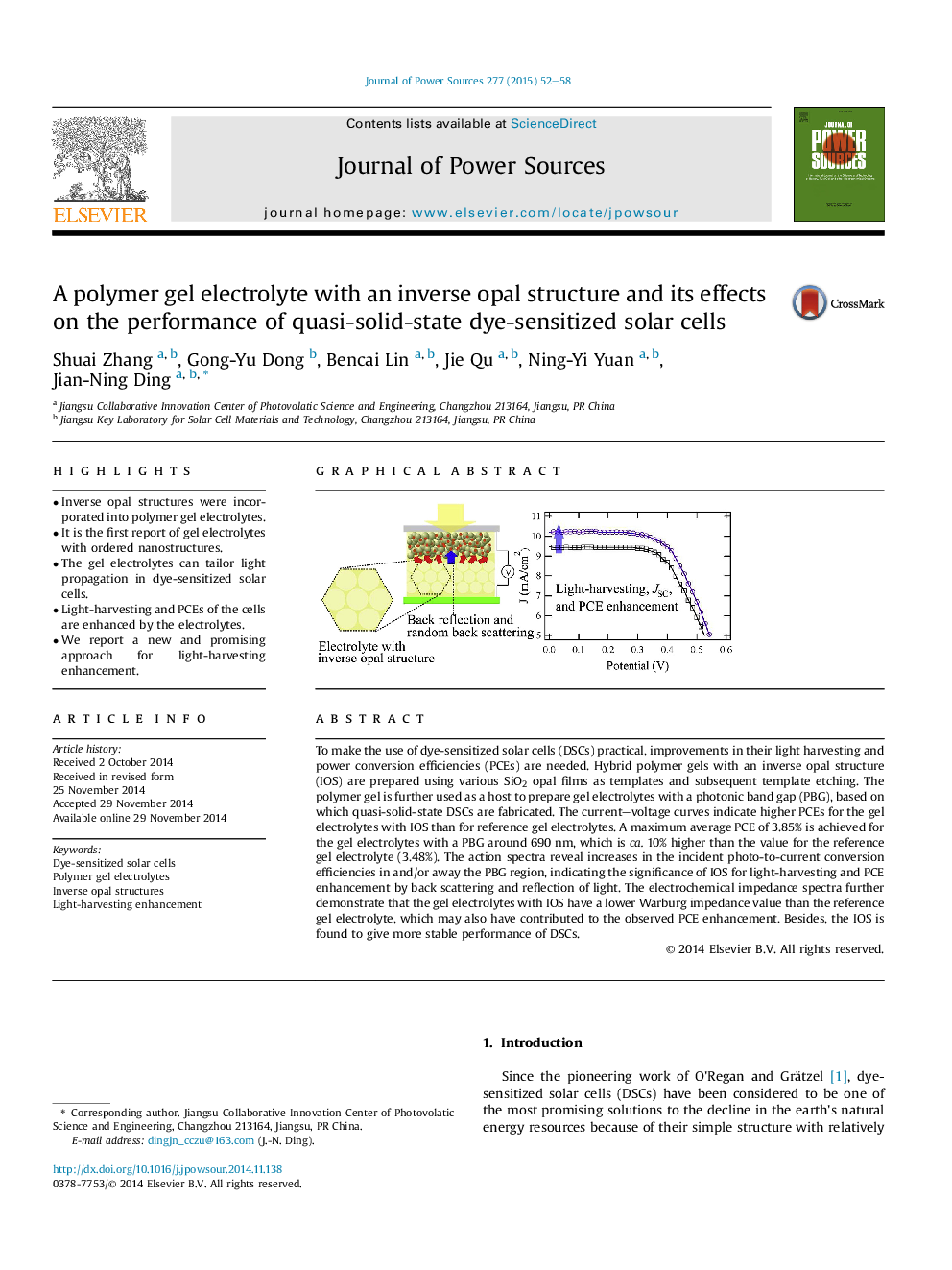| Article ID | Journal | Published Year | Pages | File Type |
|---|---|---|---|---|
| 1286840 | Journal of Power Sources | 2015 | 7 Pages |
•Inverse opal structures were incorporated into polymer gel electrolytes.•It is the first report of gel electrolytes with ordered nanostructures.•The gel electrolytes can tailor light propagation in dye-sensitized solar cells.•Light-harvesting and PCEs of the cells are enhanced by the electrolytes.•We report a new and promising approach for light-harvesting enhancement.
To make the use of dye-sensitized solar cells (DSCs) practical, improvements in their light harvesting and power conversion efficiencies (PCEs) are needed. Hybrid polymer gels with an inverse opal structure (IOS) are prepared using various SiO2 opal films as templates and subsequent template etching. The polymer gel is further used as a host to prepare gel electrolytes with a photonic band gap (PBG), based on which quasi-solid-state DSCs are fabricated. The current–voltage curves indicate higher PCEs for the gel electrolytes with IOS than for reference gel electrolytes. A maximum average PCE of 3.85% is achieved for the gel electrolytes with a PBG around 690 nm, which is ca. 10% higher than the value for the reference gel electrolyte (3.48%). The action spectra reveal increases in the incident photo-to-current conversion efficiencies in and/or away the PBG region, indicating the significance of IOS for light-harvesting and PCE enhancement by back scattering and reflection of light. The electrochemical impedance spectra further demonstrate that the gel electrolytes with IOS have a lower Warburg impedance value than the reference gel electrolyte, which may also have contributed to the observed PCE enhancement. Besides, the IOS is found to give more stable performance of DSCs.
Graphical abstractFigure optionsDownload full-size imageDownload as PowerPoint slide
